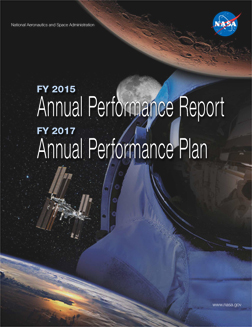- Home
- Agencies
- Department of Agriculture
- Department of Housing and Urban Development
- General Services Administration
- Department of Commerce
- Department of the Interior
- National Aeronautics and Space Administration
- Department of Defense
- Department of Justice
- National Science Foundation
- Department of Education
- Department of Labor
- Office of Personnel Management
- Department of Energy
- Department of State
- Small Business Administration
- Environmental Protection Agency
- Department of Transportation
- Social Security Administration
- Department of Health and Human Services
- Department of the Treasury
- U.S. Agency for International Development
- Department of Homeland Security
- Department of Veterans Affairs
- Goals
- Initiatives
- Programs
Primary tabs
Key to Changes
This text is Revised text
This word has been added to the text
This text is Last Published text
This word has been removed from the text
Modifed styling with no visual changes
Strategic Objective
Optimize NASA's technology investments.
Strategic Objective
Overview
NASA’s missions require that we expand the boundaries of our technological capabilities to explore our solar system, increase our understanding of space, and improve life on Earth. Innovation and invention are the necessary elements that will enable this progress and shape our future. Efficient management of technology investments is more critical than ever. NASA, like other technology development organizations, both Government and commercial, must balance technology investments and promote successful innovation with limited resources.
To optimize the technology portfolio, we seek to align mission directorate technology investments, eliminate duplication, and lower costs while providing critical capabilities that support missions and longer-term national needs. We strive to develop tools and processes to manage the technology portfolio, find better ways to analyze our portfolio, identify mission needs, create roadmaps, set priorities, establish partnerships, and engage scientists, engineers, and the public to invent extraordinary technologies for our future.
Progress Update
Through the Strategic Review and the Agency’s other performance management processes, NASA reviews recent accomplishments and near term plans for the Agency’s strategic objectives and programs. Under Strategic Objective 2.3, NASA’s Office of the Chief Technologist (OCT) provides the strategy and leadership that guide NASA’s technology development and open innovation activities. OCT accomplished a number of Federal government “firsts” this year, including the public release of TechPort and the release of an updated version of NASA’s software catalog. Additionally, OCT launched NASASolve and the Asteroid Data Hunter Challenge greatly exceeded expectations.
Over the next several years, NASA’s critical next steps are to complete an independent review of the 2015 NASA Technology Roadmaps, finalize the updated NASA Strategic Technology Investment Plan (STIP), and develop and implement a new initiative to track infusion of NASA-developed technology into NASA missions and ground activities. Specific performance measures for the next two years can be found in NASA’s FY 2016 and FY 2017 Annual Performance Plans.
The Strategic Review also addresses long-term strategic outcomes, alignment, and key management challenges for each strategic objective, as well as across NASA’s portfolio of activities. In 10 years, NASA plans that the Agency’s current efforts under Strategic Objective 2.3 will lead to the optimization of the Agency’s technology portfolio (by aligning technology investments across organizations and minimizing duplication). Open Innovation will thrive within NASA, and the transfer of technologies to U.S. companies will be maximized. NASA is working to improve the transfer of technology to external users, which requires the resources and workforce to implement.
For more information, please see http://www.nasa.gov/offices/oct/home/index.html. Highlighted achievements during FY 2015 are detailed in the FY 2015 Agency Financial Report. Additional details on the FY 2015 performance for supporting Performance Goals and Annual Performance Indicators are provided in NASA’s FY 2015 Annual Performance Report. Information on the strategies for achieving this strategic objective can be found in the 2014 NASA Strategic Plan.








